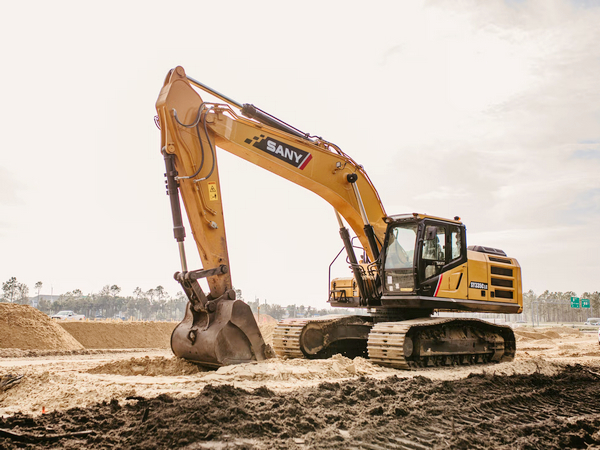With temperatures dropping and northern regions already seeing snowfall, it’s time to get your excavator prepared for winter. Here are the essential cold-weather maintenance practices to ensure reliable starts, stable performance, and long-term component protection.
________________________________________
1. Engine Oil Selection
• China IV (Tier 4-equivalent) engines: Use CK-4 engine oil
(CI-4 for engines without aftertreatment; CK-4 for engines with aftertreatment).
• China III engines: Use CI-4 engine oil.
• Always select oil viscosity according to regional climate, seasonal temperature, and operating environment.
________________________________________
2. Fuel Selection & Management
Fuel must be adjusted promptly according to temperature changes to prevent waxing and flow restriction.
Key recommendations:
1. Choose the correct winter-grade diesel based on local temperatures and fuel specifications. Incorrect grades will cause wax precipitation, leading to restricted or blocked fuel lines.
2. After switching fuel types, idle the machine for at least 5 minutes to ensure the system is fully primed.
3. Replace the fuel filter according to maintenance intervals.
4. Thoroughly clean the water separator, removing impurities and moisture; replace if cleaning is insufficient.
5. Clean the fuel tank periodically to remove sediment.
6. Avoid high-sulfur or poor-quality fuel, which accelerates wear on the fuel pump and injectors and can cause DOC poisoning, DPF clogging, and SCR efficiency loss.
________________________________________
3. Use Genuine Oils & Parts
Always purchase original LOVOL lubricants and components through authorized channels. Genuine parts directly affect the machine’s service life, fuel efficiency, system reliability, and long-term operating costs.
________________________________________
Vehicle Maintenance
1. Pre-Operation Warm-Up
Before working in cold weather:
• Idle the engine for 5 minutes.
• Check for oil or coolant leaks, ensure warning lights extinguish normally, and confirm engine sound and exhaust color are normal.
• Perform slow, controlled movements to warm the hydraulic system and prevent damage caused by sudden high-pressure operation.
________________________________________
2. Battery Capacity Check
1. Battery capacity drops significantly at low temperatures. Keep the battery warm—remove it and store it indoors when the machine is idle for long periods.
2. Clean corrosion from terminals to avoid poor contact.
Note:
For long-term storage, remove the battery and store indoors; charge periodically. For short stops, turn off unnecessary electrical loads and disconnect the negative terminal after operation.
________________________________________
3. Antifreeze Usage & Precautions
1. Perform coolant checks during seasonal maintenance.
2. Do not replace coolant with natural water (e.g., river/groundwater), which reduces cooling efficiency and causes corrosion.
3. Replace coolant every 2 years or 2000 hours (whichever comes first). Do not mix different brands or types to avoid chemical reactions, sedimentation, or foaming.
Important:
• Before replacement, clean scale and rust from the radiator.
• For long-term storage, idle the machine before shutdown, allow coolant to cool below 60°C, then drain completely to prevent freezing damage.
________________________________________
4. Water Pump Inspection
If oil emulsification occurs after changing coolant, the cause may be a worn or failed water pump seal allowing coolant to enter the oil passages.
Solutions:
• Replace the water pump seal or the water pump assembly.
• After repair, run the engine at idle to flush out remaining coolant using fresh engine oil.
• Shorten the next oil change interval to restore normal lubrication.
________________________________________
5. “Three Leaks” Inspection (Oil, Air, Coolant)
Cold temperatures intensify contraction of rubber seals in the hydraulic, intake, and cooling systems. Below 0°C, leaks may appear; near –10°C, the risk increases.
Perform a full inspection before winter to eliminate leak risks.
________________________________________
6. Electrical System Check
Aging electrical components frequently cause hard-start issues in winter. Seasonal inspection and replacement of worn wiring and connectors are essential to reduce starting failures.
________________________________________
7. Heating System Check
Test the cab heating system before severe winter conditions to ensure safe and comfortable operation.













